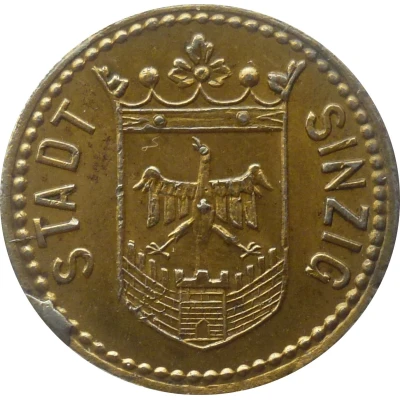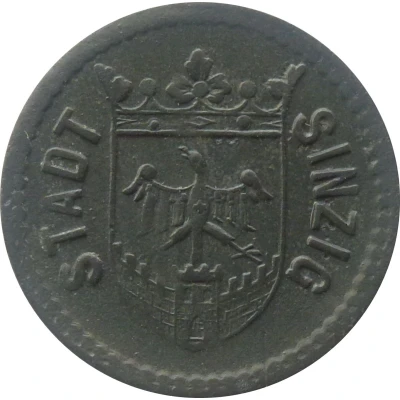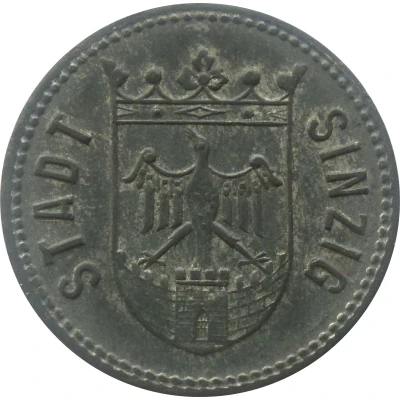


© Willem63 (CC BY-NC-SA)
5 Pfennigs - Sinzig
1919 year| Iron | 2.4 g | 18.0 mm |
| Issuer | City of Sinzig (Prussian province of Rhine) |
|---|---|
| Period | Weimar Republic (1918-1933) |
| Type | Standard circulation coin |
| Year | 1919 |
| Value | 5 Pfennigs (5 Pfennige) (0.05) |
| Currency | Mark (1914-1924) |
| Composition | Iron |
| Weight | 2.4 g |
| Diameter | 18.0 mm |
| Thickness | 1.1 mm |
| Shape | Round |
| Technique | Milled |
| Orientation | Medal alignment ↑↑ |
| Demonetized | Yes |
| Updated | 2024-10-04 |
| Numista | N#117258 |
|---|---|
| Rarity index | 77% |
Reverse
Pearl rim, legend surrounding denomination.
Script: Latin
Lettering:
NOTSTANDGELD
5
✶ 1919 ✶
Edge
Plain
Comment
Issuing body: [Stadt, Rheinprovinz].Interesting fact
One interesting fact about the 5 Pfennigs - Sinzig 1919 coin is that it was issued during a time of economic turmoil in Germany, known as the "Inflationary Period" (1914-1923), when the value of the German mark plummeted, and the prices of goods and services skyrocketed. As a result, the government was forced to produce coins with lower denominations, such as the 5 Pfennigs, to keep up with the increasing demand for small change. Despite being made of iron and having a relatively low value, the coin remains a valuable collector's item today, particularly among numismatists interested in German currency.



